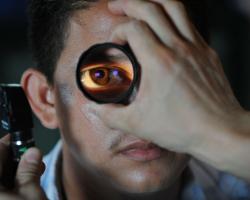Cervical erosion is one of the most common lesions of reproductive organs in women. It looks like a spot of intense red colour. It does not cause pain although it may also have other symptoms, such as vaginal discharge or postcoital bleeding. In order to find it, you need to visit a gynaecologist.
According to Dr. Ewa Surynt, a specialist in gynaecology and obstetrics from the Enel-Med Medical Centre, while mentioning cervical erosion in gynaecology, we need to distinguish two concepts: the true cervical erosion and the so-called alleged cervical erosion.
True erosion
Erosion in the pathological sense involves the loss of epithelium. In gynaecology, such loss can occur in the uterine cervix but we also deal with erosion in other organs such as the stomach.
“True cervical erosion is caused primarily by bacterial and viral infections and risky behaviour, such as having a large number of sexual partners," Dr. Surynt explained.
This type of erosion may have serious consequences – it is an important risk factor for other diseases, including cancerous and precancerous ones.
Pseudo erosion
According to Dr. Surynt, 80-90 percent of women who mention cervical erosion in fact have erythroplakia, also called pseudo erosion.
“In the cervical canal, there is columnar epithelium, and in the vaginal portion of the cervix – squamous epithelium. If any neoplastic lesions occur, they happen on the border of the two epithelia. Doctors often diagnose the eversion of columnar epithelium of the cervical canal to its vaginal portion as cervical erosion, although it is not necessarily pathological," says the gynaecologist.
She adds that with the naked eye it can be seen as redness on the vaginal portion of the cervix.
Hormonal imbalance or use of hormonal contraception may be a reason of erythroplakia. This form of cervical erosion is often diagnosed in young women.
According to the gynaecologist, erythroplakia (pseudo erosion) is not a dangerous pathology and requires only observation or, in some cases, a local anti-inflammatory therapy.
What may be the symptoms of cervical erosion
A woman herself will not notice cervical erosion. The lesion does not hurt and is often asymptomatic. The only symptoms that may occur include recurrent infections, vaginal discharge and bleeding after sexual contact.
The basis for detecting cervical erosion is as follows: gynaecological examination, smear tests (laboratory analysis of cervical smears) and colposcopy (cervical examination under magnification, which allows to view the cervix in even forty-fold enlargement, additionally applying a test with acetic acid and Lugol's iodine).
In advanced or doubtful cases, cervical biopsy is necessary.
The consequences of untreated cervical erosion
In the case of true cervical erosion after a series of tests, the doctor will decide on the appropriate method of treatment.
If the lesion does not have premalignant or malignant characteristics, the patient can undergo electrocoagulation (burning), cryotherapy (freezing). Laser therapy or chemical treatment can also be used. If the lesion is either cancerous or precancerous, conisation, that is excising a part of the cervix, is performed.
Dr. Surynt states that doctors usually carefully apply the surgical treatment of cervical erosions in women who have not given birth because they cause scarring of the cervix, and even shorten it, which can cause problems with their pregnancy and childbirth.
If left untreated, cervical erosion can lead to premalignant and malignant lesions, such as cervical cancer.









Comments (0)